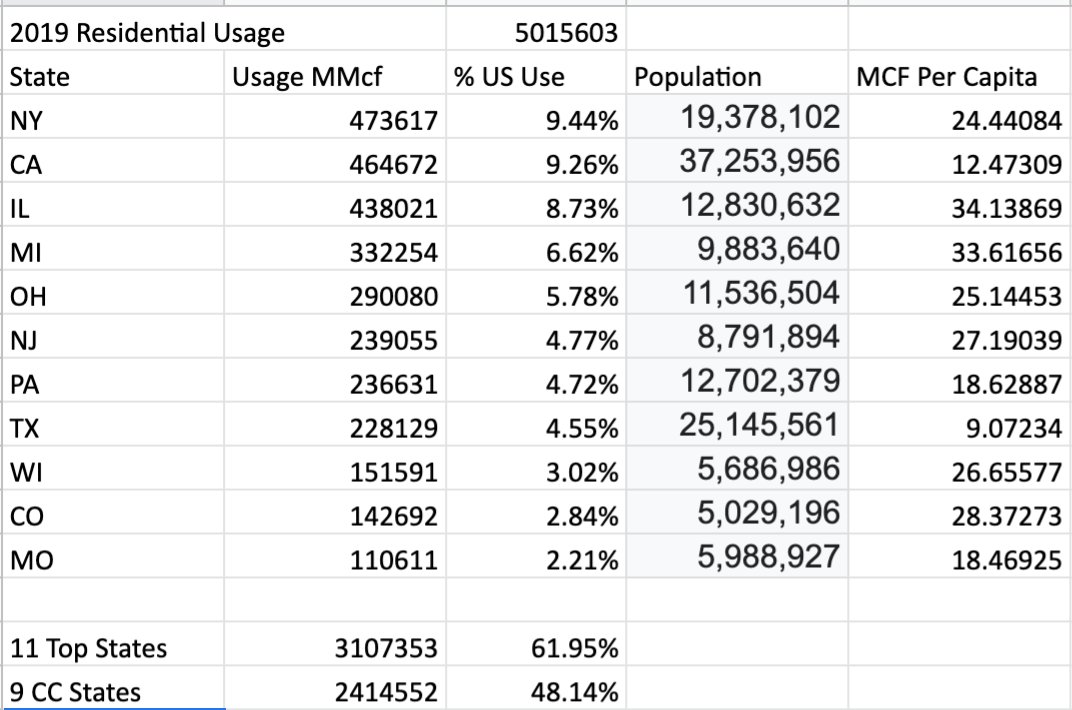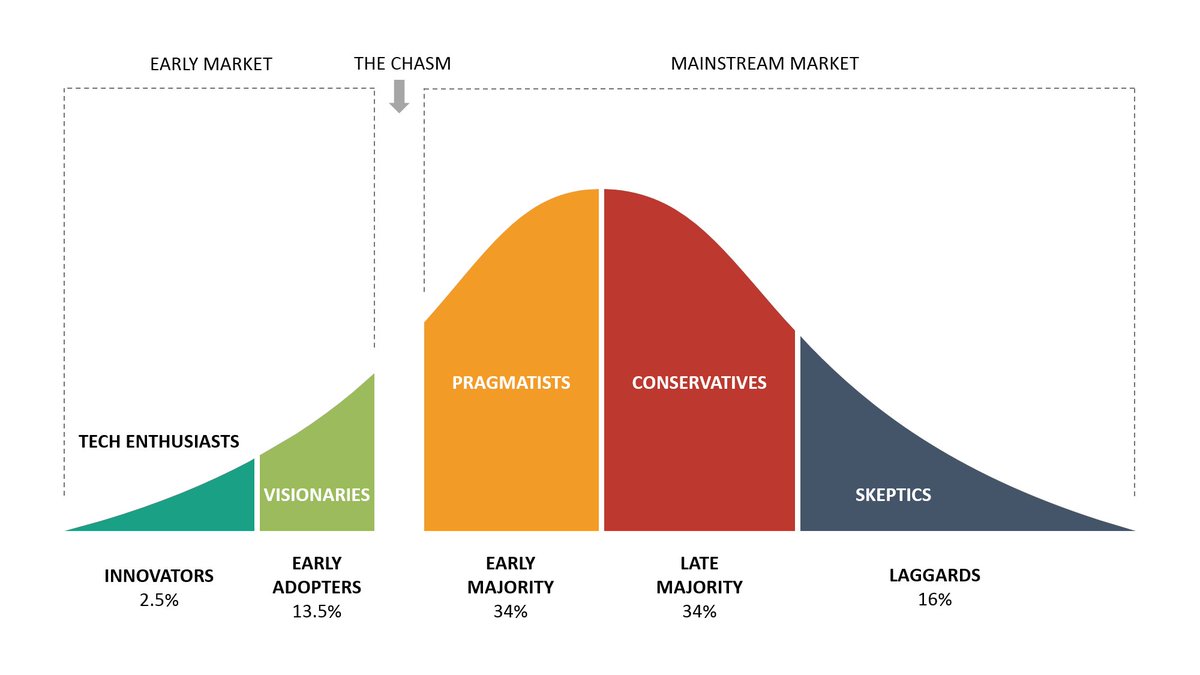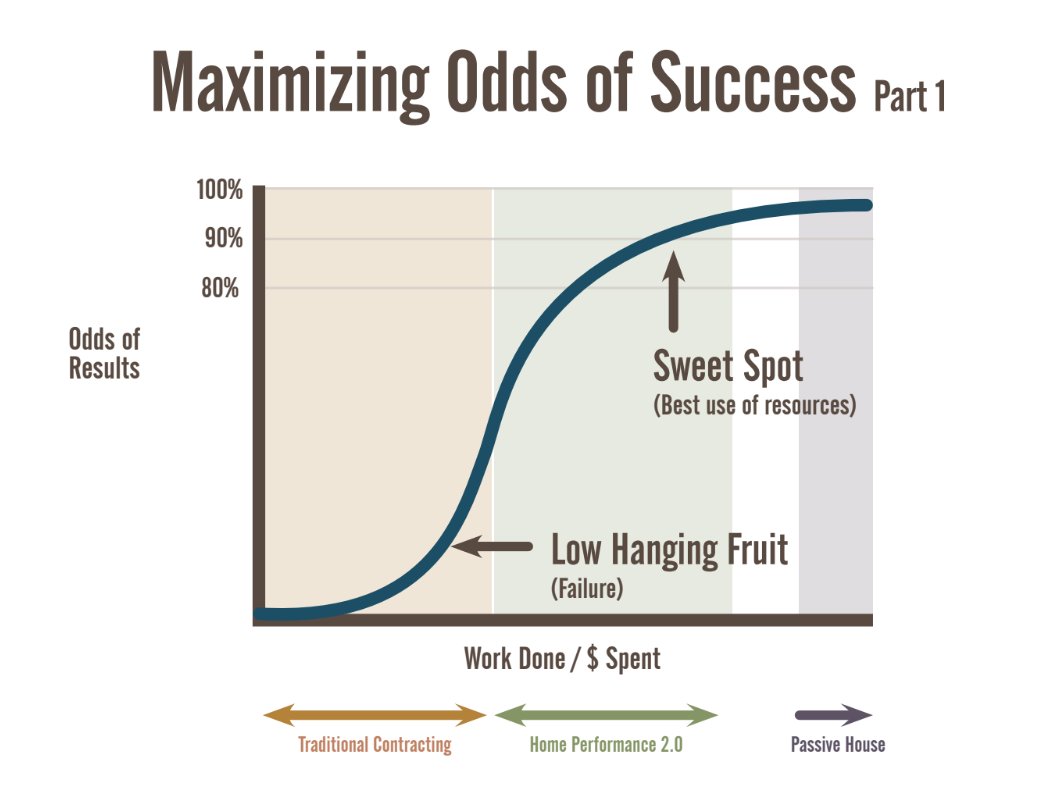
THREAD:
48% of US residential fossil gas use is from 9 cold (or cold-ish) states. This is a major #electrifyeverything challenge.
Source: eia.gov/dnav/ng/ng_con…
HT @JuliePi31415926
@buildingdecarb heads up
48% of US residential fossil gas use is from 9 cold (or cold-ish) states. This is a major #electrifyeverything challenge.
Source: eia.gov/dnav/ng/ng_con…
HT @JuliePi31415926
@buildingdecarb heads up

I wanted to look at this two ways. First, raw usage by state, then usage per person.
Note that CA and TX are WAAAAYYYY less than the others.
You can tell that PA and MO are a bit mild too.
NJ should be mild (mainly climate zone 4), but isn't, poor buildings?
Note that CA and TX are WAAAAYYYY less than the others.
You can tell that PA and MO are a bit mild too.
NJ should be mild (mainly climate zone 4), but isn't, poor buildings?
Note IL in particular. Third highest usage. Chicago is the third largest city in the US.
You literally can't buy a standard heat pump there. Aka unitary, they look like a furnace.
You can in WI just north, but not in IL. No idea why, but it's a fact.
You literally can't buy a standard heat pump there. Aka unitary, they look like a furnace.
You can in WI just north, but not in IL. No idea why, but it's a fact.
In the third largest city in the US heat pumps aren't stocked.
This is a HUGE problem because 85% of residential HVAC replacement is on an emergency basis. If it isn't in stock, it doesn't get installed. End of story.
This is a HUGE problem because 85% of residential HVAC replacement is on an emergency basis. If it isn't in stock, it doesn't get installed. End of story.
Also, most HVAC contractors in cold climates strongly dislike or even hate heat pumps, often because of poor experiences years ago (which may be the root in Chicago?)
Heat pumps definitely work in these climates, I live in Cleveland which is the same climate as Chicago.
Contractor dislike is a MASSIVE challenge. They can easily turn a homeowner off a heat pump, just a little FUD (fear, uncertainty, and doubt) can do it.
Contractor dislike is a MASSIVE challenge. They can easily turn a homeowner off a heat pump, just a little FUD (fear, uncertainty, and doubt) can do it.
Oddly enough, many California HVAC contractors are also afraid of heat pumps, which is wild because the climate there is ideal (heat pumps are really happy in the 40-85F range.)
As California works to promote electrification, I'd HIGHLY recommend trying to do it in a way that is applicable to the rest of the country.
Namely by focusing rabidly on the "kitchen table" transaction between the homeowner and contractor. Nothing else matters.
Namely by focusing rabidly on the "kitchen table" transaction between the homeowner and contractor. Nothing else matters.
It is critical to educate both parties and make sure that their interests are aligned - contractors want to make money without a ton of hassle, homeowners want smooth transactions and problems to be solved.
This is mainly done by creating value.
This is mainly done by creating value.
Almost all electric options (the really good replacements anyway) cost more than their gas equivalents.
While some of this can be blunted with rebates, the money always runs out.
While some of this can be blunted with rebates, the money always runs out.
When price is a problem there are two ways to solve it: lower the price or increase the value.
Lowering the price is not a good option, as @JMPyper sagely told me, all of these projects are bespoke. They are custom every time. Contractors need to make money!
Lowering the price is not a good option, as @JMPyper sagely told me, all of these projects are bespoke. They are custom every time. Contractors need to make money!
So that leaves us the second option: build value.
We do this in our practice by asking our clients what they want to solve, then what it's worth to solve.
We do this in our practice by asking our clients what they want to solve, then what it's worth to solve.
If a good job is done building this value, more expensive projects happen and both the contractor and the homeowner are happy.
Happiness is the goal, or Net Promoter Score of 9 or 10.
Happiness is the goal, or Net Promoter Score of 9 or 10.
If we don't do a good job of creating a contractor network and scalable sales process to build value, we strongly believe electrification of existing homes will fail to launch.
My hope is that California will do a very good job of this and other states can follow the same path rather than scoff.
This is the time to cast the vision and set the path, every 6 seconds a new piece of residential HVAC starts up, and the opportunity is lost until 2035-2040.
This is the time to cast the vision and set the path, every 6 seconds a new piece of residential HVAC starts up, and the opportunity is lost until 2035-2040.
If we're thoughtful about this, we can make this happen, and then apply the same lessons in the 9 cold climate states where half the fossil gas is burned.
I'm doing a webinar next week with @buildingdecarb on this subject, if you want to learn more, join us!
And don't forget to retweet if you want others to know about this too.
bit.ly/BuildingDecarb…
And don't forget to retweet if you want others to know about this too.
bit.ly/BuildingDecarb…
• • •
Missing some Tweet in this thread? You can try to
force a refresh











